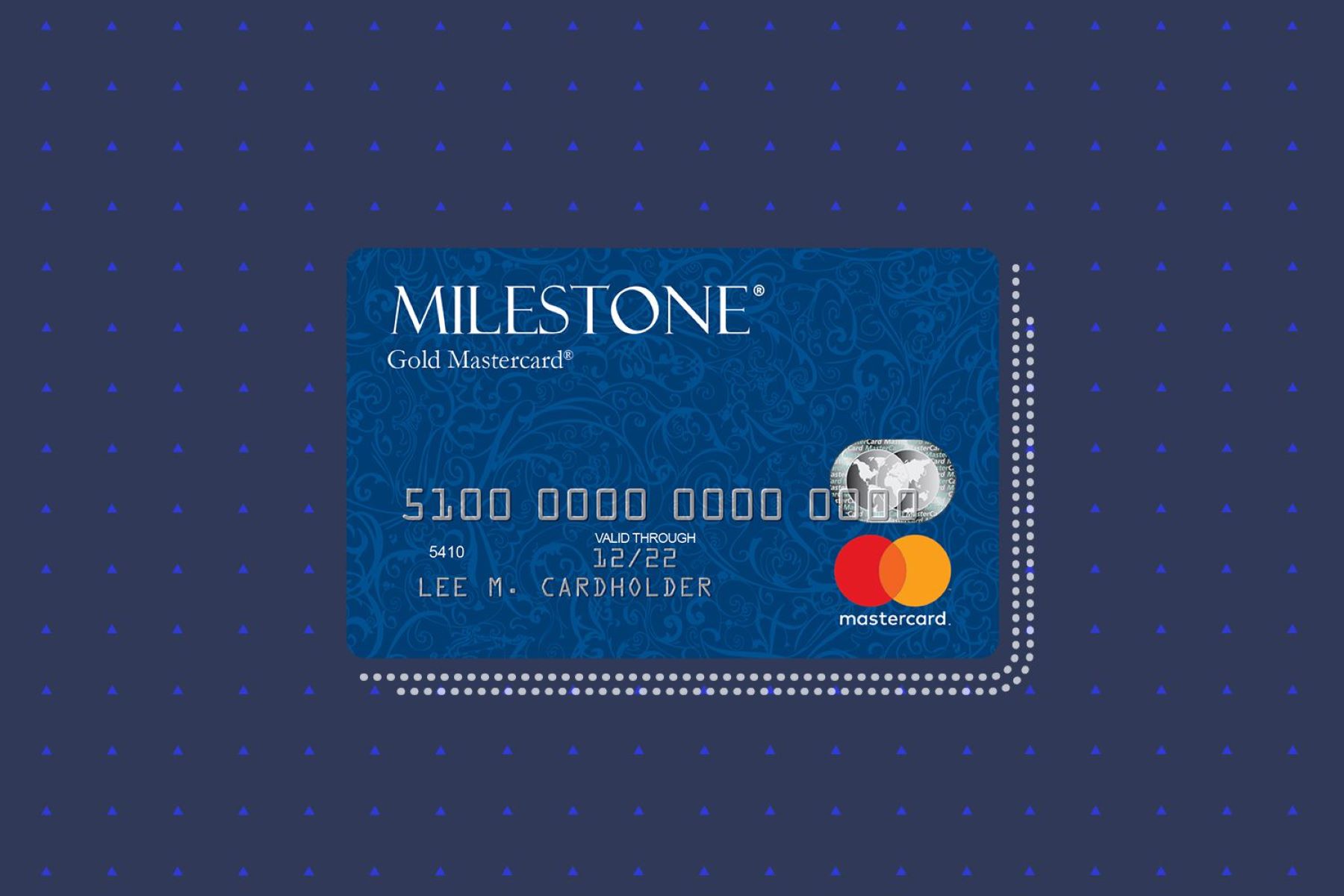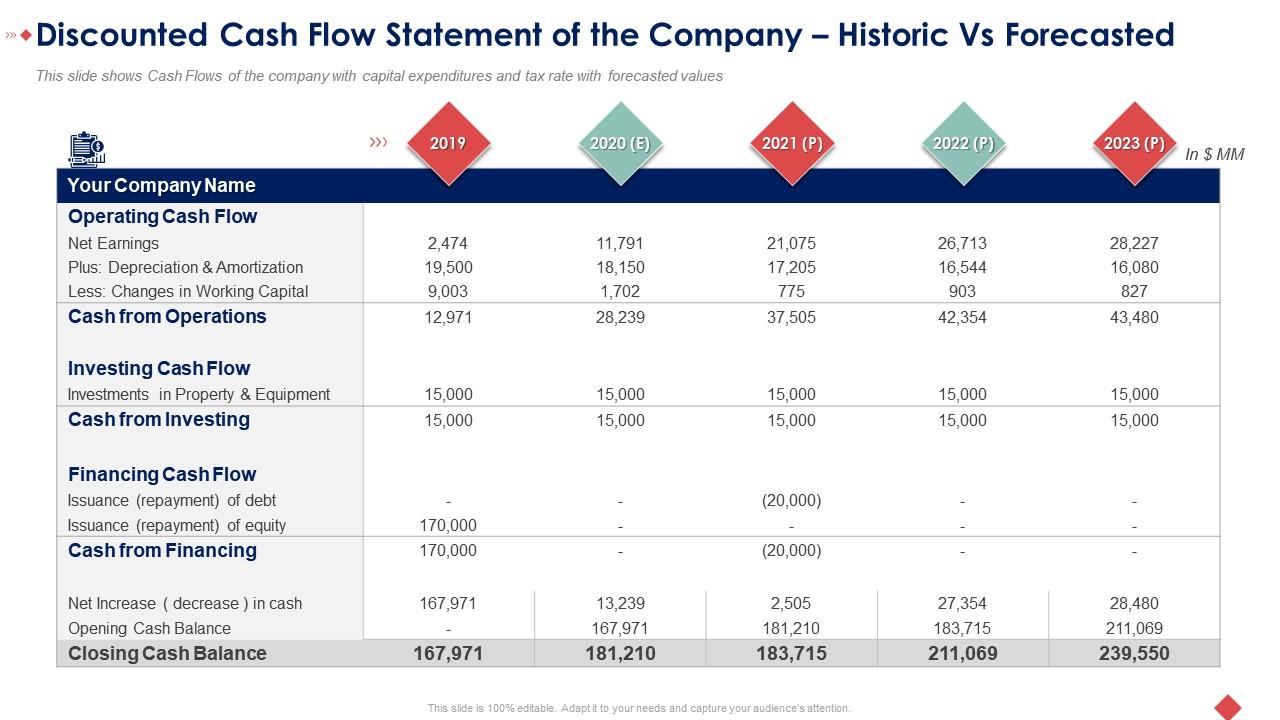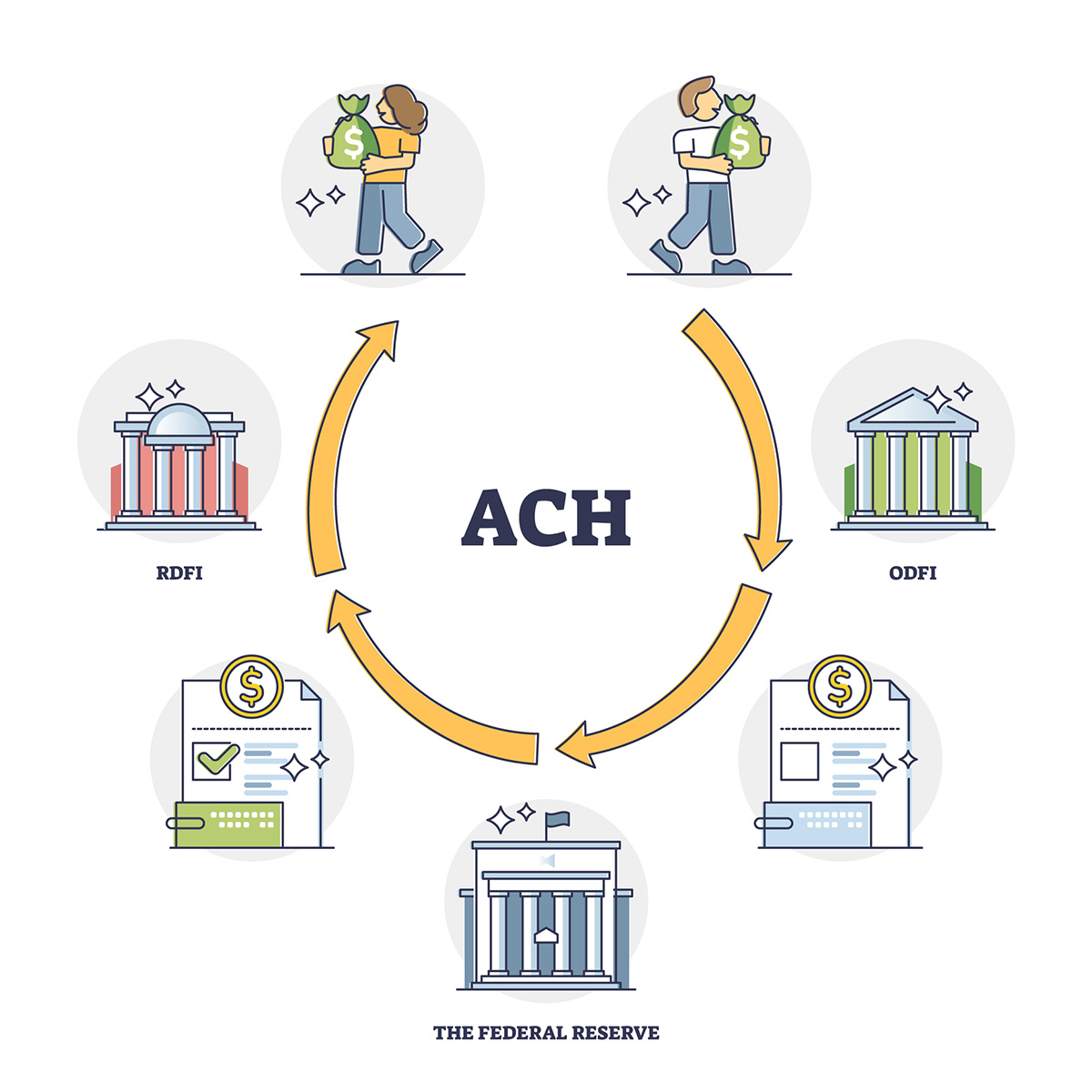

Finance
How To Pay A Loan With A Credit Card
Modified: March 3, 2024
Learn how to pay off a loan using a credit card and manage your finances effectively. Discover the benefits of this financial strategy for debt repayment.
(Many of the links in this article redirect to a specific reviewed product. Your purchase of these products through affiliate links helps to generate commission for LiveWell, at no extra cost. Learn more)
Table of Contents
- Introduction
- Understanding Loan Payments
- Using a Credit Card to Pay Off a Loan
- Assessing the Feasibility of Paying a Loan with a Credit Card
- Comparing Interest Rates and Fees
- Transferring the Loan Balance to a Credit Card
- Making Payments with a Credit Card
- Monitoring and Managing Credit Card Payments
- Potential Risks and Considerations
- Conclusion
Introduction
Managing loans can be a challenging task, especially when there are multiple monthly payments to keep track of. If you find yourself struggling to keep up with loan payments, you may wonder if there’s a more convenient way to handle your financial obligations. One option to consider is paying off a loan with a credit card.
Using a credit card to pay off a loan can offer several benefits, such as simplifying your repayment process and potentially taking advantage of credit card rewards. However, it’s essential to thoroughly understand the implications and potential risks before proceeding with this strategy.
In this article, we will explore the various aspects of paying off a loan with a credit card. We’ll discuss the feasibility of this approach, compare interest rates and fees, explain how to transfer the loan balance to a credit card, and offer insights on making payments and managing credit card obligations. By the end, you will have a clear understanding of whether this option is suitable for your financial situation.
Before delving into the details, it’s crucial to note that the information provided in this article is for educational purposes only and should not be considered financial advice. It’s always recommended to consult with a professional financial advisor or institution before making any significant financial decisions.
Understanding Loan Payments
Before diving into the concept of paying off a loan with a credit card, it’s important to have a solid understanding of loan payments. When you take out a loan, whether it’s a personal loan, student loan, or car loan, you typically agree to a specific repayment structure.
Loan payments are typically monthly installments that include both the principal amount borrowed and the interest charged by the lender. The principal is the initial amount you borrowed, while the interest is the cost charged by the lender for borrowing that money.
The amount of your monthly loan payment typically depends on the interest rate, loan term, and the principal amount. The interest rate is expressed as an annual percentage rate (APR) that determines how much you’ll pay in interest over the life of the loan.
For example, if you borrow $10,000 with an APR of 5% and a loan term of 5 years, your monthly payment would be approximately $188.71. Over the course of the loan, you would pay a total of $1,322.83 in interest, in addition to the principal amount.
Understanding the structure of loan payments is essential because it will help you evaluate whether paying off a loan with a credit card is a viable option. You need to consider factors such as the interest rate on the credit card, the fees involved, and how it compares to your current loan terms.
Now that we have a clear understanding of loan payments, let’s explore the option of using a credit card to pay off a loan.
Using a Credit Card to Pay Off a Loan
Using a credit card to pay off a loan can be an enticing option for borrowers looking to simplify their monthly payments or take advantage of credit card perks. However, it’s important to weigh the pros and cons before deciding if this strategy is right for you.
One potential benefit of paying off a loan with a credit card is the convenience of having a single monthly payment. Instead of juggling multiple loan payments, you can streamline your finances by consolidating your debts onto a credit card. This can help you stay organized and reduce the chances of missing a payment.
Additionally, some credit cards offer rewards programs that allow you to earn cashback, travel points, or other perks when you use your card. By using a credit card to pay off your loan, you may be able to earn rewards on your monthly payments. However, it’s important to compare the potential rewards with the interest rates and fees associated with the credit card.
Another advantage of using a credit card to pay off a loan is the potential for a promotional interest rate. Some credit cards offer introductory 0% APR periods, which means you won’t accrue any interest on your credit card balance during that time. If you can pay off your loan within the promotional period, you could save money on interest charges.
However, it’s crucial to be aware that the promotional period typically has a limited duration, often ranging from 6 to 18 months. Once the promotional period ends, the credit card’s regular interest rate will apply to any remaining balance. Therefore, it’s essential to have a repayment plan in place to avoid high interest charges after the promotional period expires.
On the downside, paying off a loan with a credit card may come with additional fees and higher interest rates compared to traditional loans. Credit cards often have higher interest rates than personal loans, and if you carry a balance from month to month, the interest charges can add up quickly.
In the next sections, we will delve into the feasibility of paying off a loan with a credit card, comparing interest rates and fees, and exploring how to transfer the loan balance to a credit card.
Assessing the Feasibility of Paying a Loan with a Credit Card
Before deciding to pay off a loan with a credit card, it’s important to assess the feasibility of this approach. Consider the following factors to determine if it’s a viable option for your financial situation:
1. Credit Card Limit: Evaluate the credit limit on your credit card. Ensure that it is sufficient to accommodate the loan balance you intend to transfer. Keep in mind that some credit card issuers may have restrictions on the maximum amount you can transfer.
2. Interest Rates: Compare the interest rate on your loan with the interest rate on the credit card. If the credit card’s interest rate is significantly higher, it may not be financially prudent to utilize it for loan repayment.
3. Promotional Offers: Check if your credit card offers any promotional APR periods with low or 0% interest rates. Utilizing these offers can help you save money on interest charges, especially if you can repay the loan within the promotional period.
4. Fees: Take into account any fees associated with balance transfers or cash advances on your credit card. These fees can impact the overall cost-effectiveness of using a credit card to pay off a loan.
5. Credit Score Impact: Understand that opening a new credit card or utilizing a significant portion of your existing credit limit can impact your credit score. Consider the potential consequences to your creditworthiness before proceeding.
6. Repayment Plan: Have a clear repayment plan in place before transferring your loan balance to a credit card. Ensure that you can make consistent monthly payments on the credit card to avoid accumulating high-interest charges and potential late fees.
By evaluating these feasibility factors, you can determine if paying off a loan with a credit card makes financial sense in your specific circumstances. It’s important to carefully weigh the potential advantages and disadvantages to make an informed decision.
In the next section, we will compare interest rates and fees to help you further assess the cost-effectiveness of using a credit card to pay off a loan.
Comparing Interest Rates and Fees
When considering paying off a loan with a credit card, it’s crucial to compare the interest rates and fees associated with both options. This analysis will help you determine the cost-effectiveness and potential savings of using a credit card. Here are some key factors to consider:
1. Loan Interest Rate: Begin by reviewing the interest rate on your existing loan. This is the rate at which you are currently being charged for borrowing the principal amount. Make note of this rate as a benchmark for comparison.
2. Credit Card Interest Rate: Look into the interest rate on your credit card. It’s important to note that credit cards generally have higher interest rates than traditional loans. Take note of the APR, which represents the annual percentage rate of interest charged.
3. Promotional APR: Check if your credit card offers a promotional APR on balance transfers. This is usually a lower or 0% interest rate for a specified period. Take note of the duration and any terms and conditions associated with this promotional offer.
4. Balance Transfer Fees: Determine if your credit card imposes any balance transfer fees. These fees can be a percentage of the transferred amount or a flat fee. Consider whether paying these fees is financially beneficial compared to the interest savings you can achieve.
5. Cash Advance Fees: If you decide to withdraw cash from your credit card to pay off the loan, be aware of any cash advance fees. These fees are typically charged as a percentage of the cash advance amount and can add to the overall cost of using a credit card.
6. Late Payment Fees: Understand the late payment fees associated with your credit card. Ensure that you can make consistent and timely payments to avoid these fees, which can quickly accumulate and eat into any potential savings.
By comparing the interest rates and fees, you can determine if paying off a loan with a credit card is financially beneficial. If the credit card’s interest rate is significantly higher than your loan’s rate and the fees outweigh the potential savings, it may not be a cost-effective option.
In the next section, we will delve into the process of transferring the loan balance to a credit card.
Transferring the Loan Balance to a Credit Card
Once you have assessed the feasibility and cost-effectiveness of using a credit card to pay off a loan, the next step is to understand how to transfer the loan balance to a credit card. Here are the general steps involved in this process:
1. Review Credit Card Terms: Before proceeding with a balance transfer, carefully review the terms and conditions of your credit card. Pay attention to any balance transfer offers, fees, and limitations.
2. Contact the Credit Card Issuer: Reach out to your credit card issuer to inquire about the balance transfer process. They will provide you with specific instructions and may require you to complete a balance transfer request form.
3. Gather Loan Information: Collect all the necessary information about your loan, including the principal amount, outstanding balance, and any account numbers or details required for the transfer process.
4. Complete the Balance Transfer: Follow the instructions provided by your credit card issuer to initiate the balance transfer. This typically involves providing the loan information and authorizing the transfer. Some credit card issuers may handle the transfer on your behalf, while others may require you to initiate the process with your loan provider.
5. Await Confirmation: Once the balance transfer is initiated, await confirmation from both your credit card issuer and the loan provider. Ensure that the loan balance reflects on your credit card statement, confirming the successful transfer.
6. Continue Loan Payments: While the loan balance is being transferred to your credit card, continue making payments on your loan as scheduled. This is crucial to avoid any late fees or negative impact on your credit score.
7. Update Payment Method: Once the balance transfer is complete, update your payment method for the loan to reflect your new credit card account. This may involve contacting your loan provider and providing the updated information.
8. Repay Credit Card Balance: With the loan balance transferred to your credit card, focus on repaying the credit card balance as per your repayment plan. Be mindful of the interest rates, fees, and promotional offers associated with your credit card to effectively manage the repayment process.
Remember, each credit card issuer may have specific procedures and requirements for balance transfers, so it’s important to follow their instructions and seek clarification if needed. By successfully transferring the loan balance to a credit card, you will consolidate your debt and have a single payment to manage.
In the following section, we will discuss making payments with a credit card and how to monitor and manage your credit card obligations.
Making Payments with a Credit Card
Once you have transferred your loan balance to a credit card, it’s essential to understand how to make payments effectively. Here are some considerations and tips for managing your credit card payments:
1. Monthly Payment Amount: Determine the monthly payment amount you need to make on your credit card to repay the transferred loan balance. Take into account the interest rate, any applicable fees, and your desired repayment timeline.
2. Payment Due Date: Note the due date for your credit card payment and ensure that you make the payment before the deadline to avoid late payment fees and potential negative impacts on your credit score.
3. Automatic Payments: Consider setting up automatic payments for your credit card to ensure you never miss a payment. This can provide convenience and peace of mind, as long as you have sufficient funds in your bank account to cover the payment.
4. Payment Allocation: If you have other balances on your credit card, such as purchases or cash advances, understand how your payments will be allocated. Some credit card issuers apply payments to the balance with the lowest interest rate first, which may not be your transferred loan balance. Clarify this with your credit card issuer if necessary.
5. Paying Above the Minimum: While the minimum payment is the required amount to avoid late fees, it’s generally recommended to pay more than the minimum. By paying more, you can reduce the overall interest charges and accelerate the repayment of your loan balance.
6. Monitor Credit Card Statements: Regularly review your credit card statements to track your payments and ensure the accuracy of the transferred loan balance. Look for any discrepancies or unexpected charges and report them to your credit card issuer immediately.
7. Credit Card Utilization: Be mindful of your credit card utilization ratio, which is the percentage of your credit card limit that you’re currently using. Keeping this ratio low can have a positive impact on your credit score. Aim to keep your utilization below 30% to demonstrate responsible credit management.
By following these tips and staying diligent with your credit card payments, you can effectively manage your loan repayment and maintain control over your credit card obligations.
Next, we will discuss monitoring and managing credit card payments to ensure a smooth and successful repayment journey.
Monitoring and Managing Credit Card Payments
Monitoring and effectively managing your credit card payments is crucial when paying off a loan with a credit card. Here are some key practices to help you stay on top of your credit card obligations:
1. Budgeting: Create a budget that includes your credit card payments to ensure you allocate sufficient funds each month. This will help you avoid missing payments and accumulating unnecessary interest charges.
2. Payment Reminders: Set up reminders, whether through your phone, calendar, or banking app, to notify you of upcoming payment due dates. This will help you stay organized and ensure timely payments.
3. Online Account Management: Take advantage of your credit card issuer’s online account management tools. These platforms allow you to view your statements, make payments, and set up alerts for payment due dates and account activity.
4. Regularly Check your Statements: Review your credit card statements each month to verify the accuracy of the charges and payments applied. Look for any errors, unauthorized transactions, or unusual activity and report them to your credit card issuer promptly.
5. Keeping Track of Interest Charges: Stay aware of the interest charges on your credit card. This will help you understand the cost of utilizing a credit card to pay off your loan and evaluate your progress in reducing the outstanding balance.
6. Paying in Full: Whenever possible, aim to pay off your credit card balance in full each month. This will help you avoid accruing unnecessary interest charges and maintain control over your repayment journey.
7. Credit Score Monitoring: Regularly check your credit score and credit reports to ensure that your credit utilization and payments are being accurately reported. This will help you monitor your overall credit health and potentially detect any issues or errors that may impact your creditworthiness.
8. Adjusting Repayment Plan: As your financial situation changes or unexpected circumstances arise, be prepared to adjust your repayment plan if needed. Prioritize making consistent payments while reassessing your strategy to align with your current financial goals and capabilities.
By monitoring and managing your credit card payments effectively, you can stay in control of your loan repayment and maintain a healthy credit profile.
In the next section, we will highlight potential risks and considerations when paying off a loan with a credit card.
Potential Risks and Considerations
While paying off a loan with a credit card can offer certain advantages, such as streamlining payments and potentially earning rewards, there are also potential risks and considerations to keep in mind. Here are some important factors to consider:
1. Higher Interest Rates: Credit cards typically have higher interest rates compared to traditional loans. If the interest rate on your credit card is significantly higher than your loan, it can result in higher interest charges and a longer repayment period.
2. Fees: Balance transfer fees, cash advance fees, and other associated fees can eat into potential savings when using a credit card. Take into account any fees imposed by your credit card issuer and weigh them against the interest savings before deciding to proceed.
3. Impact on Credit Score: Transferring a loan balance to a credit card may affect your credit score. Opening a new credit card account or utilizing a significant portion of your credit limit can impact your credit utilization ratio. Additionally, missing payments or failing to manage your credit card obligations can harm your creditworthiness.
4. Repayment Discipline: Successfully repaying a loan with a credit card requires discipline and consistent payments. Failure to make regular payments or using the credit card for additional purchases without a solid repayment plan can lead to increased debt and financial strain.
5. Loss of Loan Benefits: Review the terms of your original loan to assess if there are any benefits or protections you would lose by transferring the balance to a credit card. For instance, certain loans may offer deferment options, forgiveness programs, or fixed interest rates that may not be available with a credit card.
6. Limited Promotional Periods: If you opt for a credit card with a promotional 0% APR period, keep in mind that this offer is temporary. If you are unable to repay the entire loan balance within the promotional period, the regular interest rate will apply to any remaining balance, potentially increasing your overall cost.
7. Potential for More Debt: Using a credit card to pay off a loan requires responsible spending and budgeting. There is a risk of falling into the temptation of using the available credit on the card for additional purchases, leading to more debt and financial pressure.
It’s crucial to carefully assess these risks and considerations before deciding to pay off a loan with a credit card. Evaluate your financial situation, weigh the potential benefits against the risks, and consider consulting with a financial advisor to ensure you make an informed decision.
Finally, let’s conclude our discussion on paying off a loan with a credit card in the next section.
Conclusion
Paying off a loan with a credit card can be a convenient option to streamline your finances and potentially take advantage of credit card rewards. However, it’s essential to carefully assess the feasibility, interest rates, fees, and potential risks before deciding if this strategy is right for you.
By understanding loan payments, comparing interest rates and fees, and evaluating promotional offers, you can make an informed decision about using a credit card to pay off your loan. Consider factors such as your credit card limit, repayment plan, and the impact on your credit score.
When transferring the loan balance to a credit card, follow the necessary steps provided by your credit card issuer and ensure that you continue making payments on your loan until the transfer is complete. Stay diligent in managing your credit card payments, keeping track of interest charges, and monitoring your credit card statements.
While paying off a loan with a credit card has its benefits, be cautious of higher interest rates, potential fees, and the discipline required to maintain consistent payments. Consider potential risks such as the impact on your credit score and the loss of any loan benefits or protections.
Remember, it’s essential to tailor your decision to your specific financial situation. If you have any doubts or concerns, consult with a professional financial advisor to guide you through the process and ensure that you make the best decision for your circumstances.
Paying off a loan with a credit card can provide convenience and potentially save you money, but it’s crucial to proceed with caution and understanding. By carefully evaluating your options and managing your credit card payments responsibly, you can navigate your way towards a successful loan repayment and improved financial well-being.














